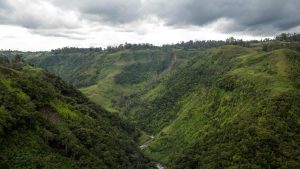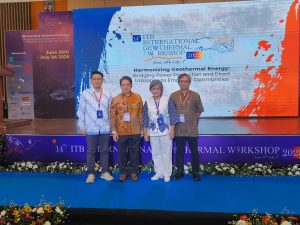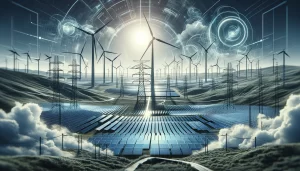Jakarta – A recent study by the Institute for Essential Services Reform (IESR) revealed that of Indonesia’s more than 3,700 GW of technical renewable energy potential, 333 GW of projects could be developed with viable investment models. More interestingly, around 205.9 GW – or 61 per cent of the total potential – has an investment rate of return (EIRR) above 10 per cent, indicating promising economic prospects for the renewable energy sector.
IESR’s Energy System Transformation Programme Manager, Deon Arinaldo, in a discussion with the media titled Editorial Forum: Raising Optimism for PLTS and PLTB as the Backbone of Energy Transition in Indonesia, Tuesday, 25 March, explained that the analysis was carried out regarding applicable tariff regulations such as Presidential Regulation No. 112/2022 as well as the availability of electricity network infrastructure, ranging from substations to transmission.
“Our findings show that, despite Indonesia’s huge potential, the realisation of renewable energy utilisation, especially solar and wind power, is still far from optimal. However, this data also opens up opportunities to move faster in developing these projects,” said Deon.
In a study entitled Unlocking Indonesia’s Renewable Future, IESR identified that the 333 GW of potential consists of terrestrial wind farms (167 GW), ground-mounted solar power plants (165.9 GW), and thermal power plants (0.7 GW) from around 1,500 potential locations. IESR Data and Modelling Group Research Coordinator, Pintoko Aji, added, “Of that total, 205.9 GW is financially viable with an EIRR above 10 percent. This indicates that investment in the renewable energy sector is technically feasible and economically profitable.”
Herman Darnel Ibrahim, Chief Expert of the Indonesian Solar Energy Association (AESI), emphasised that solar energy development is a key pillar for Indonesia’s energy future, especially given its technological maturity and competitiveness compared to nuclear and gas power plants.
“Solar energy has shown promising prospects, especially if we optimise supporting infrastructure such as the electricity grid and distribution system,” Herman said.
The IESR study is an important reference for policymakers and investors to accelerate the development of renewable energy projects in Indonesia. IESR encourages the government to accommodate land allocation, simplify the procurement process to minimise investment risk, and set specific targets per region. This data is expected to encourage the integration of locations with high profit potential, thereby increasing the acceleration of the national energy transition.
With the right policy and investment support, this 205.9 GW of financially viable potential is believed to be a milestone in achieving Indonesia’s renewable energy target and supporting efforts to reduce greenhouse gas emissions in line with global commitments. (Hartatik)
Banner photo: Image generated by OpenAI’s DALL·E via ChatGPT (2024)














